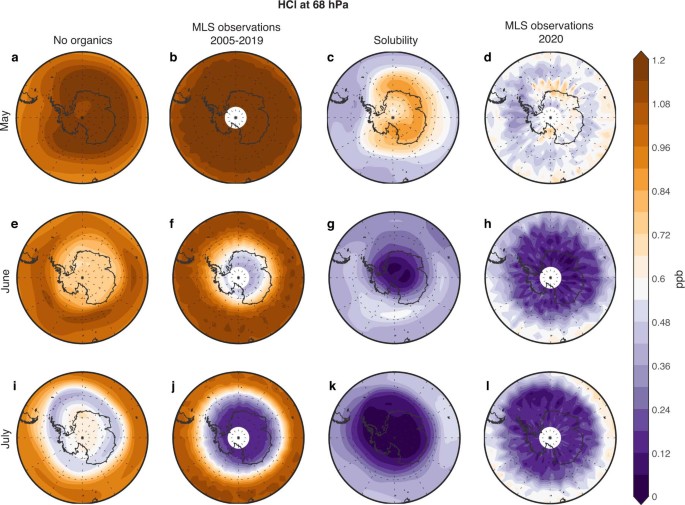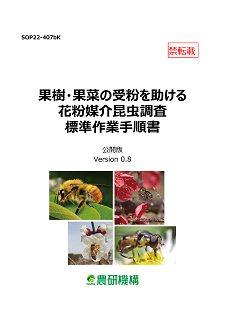MITの化学者は、オーストラリアの山火事により、2020年にオゾンホールが10%拡大したことを明らかにした。 MIT chemists show the Australian wildfires widened the ozone hole by 10 percent in 2020.
2023-03-08 マサチューセッツ工科大学(MIT)
この研究は、煙の粒子が成層圏に浮遊し、そこで化学反応を引き起こして地球を太陽の紫外線から守るオゾン層を侵食することを明らかにしている。
この研究は、2020年にオーストラリアで発生した大規模火災に焦点を当てたもので、数千万エーカーを焼き、100万トン以上の煙が大気中に放出され、記録上最も大きな被害となった。
この煙が引き起こした化学反応により、オーストラリア、ニュージーランド、アフリカ、南アメリカの中緯度地域で全オゾンの3〜5%の減少が観測され、南極のオゾンホールは10%拡大した。オゾン層の回復には持続的な国際的な取り組みが必要である。
<関連情報>
- https://news.mit.edu/2023/study-smoke-particles-wildfires-erode-ozone-0308
- https://www.nature.com/articles/s41586-022-05683-0
- https://www.pnas.org/doi/10.1073/pnas.2117325119
山火事エアロゾルによる塩素の活性化とオゾン層破壊の促進 Chlorine activation and enhanced ozone depletion induced by wildfire aerosol
Susan Solomon,Kane Stone,Pengfei Yu,D. M. Murphy,Doug Kinnison,A. R. Ravishankara & Peidong Wang
Nature Published:08 March 2023
DOI:https://doi.org/10.1038/s41586-022-05683-0

Abstract
Remarkable perturbations in the stratospheric abundances of chlorine species and ozone were observed over Southern Hemisphere mid-latitudes following the 2020 Australian wildfires1,2. These changes in atmospheric chemical composition suggest that wildfire aerosols affect stratospheric chlorine and ozone depletion chemistry. Here we propose that wildfire aerosol containing a mixture of oxidized organics and sulfate3,4,5,6,7 increases hydrochloric acid solubility8,9,10,11 and associated heterogeneous reaction rates, activating reactive chlorine species and enhancing ozone loss rates at relatively warm stratospheric temperatures. We test our hypothesis by comparing atmospheric observations to model simulations that include the proposed mechanism. Modelled changes in 2020 hydrochloric acid, chlorine nitrate and hypochlorous acid abundances are in good agreement with observations1,2. Our results indicate that wildfire aerosol chemistry, although not accounting for the record duration of the 2020 Antarctic ozone hole, does yield an increase in its area and a 3–5% depletion of southern mid-latitude total column ozone. These findings increase concern2,12,13 that more frequent and intense wildfires could delay ozone recovery in a warming world.
中緯度の山火事煙の成層圏の化学について On the stratospheric chemistry of midlatitude wildfire smoke
Susan Solomon,Kimberlee Dube,Kane Stone,Pengfei Yu,Doug Kinnison,Owen B. Toon,Susan E. Strahan,Karen H. Rosenlof,Robert Portmann,Sean Davis,William Randel,Peter Bernath,Chris Boone,Charles G. Bardeen,Adam Bourassa,Daniel Zawada,Doug Degenstein
Proceedings of the National Academy of Sciences Published:March 1, 2022
DOI:https://doi.org/10.1073/pnas.2117325119

Significance
Large wildfires have been observed to inject smoke into the stratosphere, raising questions about their potential to affect the stratospheric ozone layer that protects life on Earth from biologically damaging ultraviolet radiation. Multiple observations of aerosol and NO2 concentrations from three independent satellite instruments are used here together with model calculations to identify decreases in stratospheric NO2 concentrations following major Australian 2019 through 2020 wildfires. The data confirm that important chemistry did occur on the smoke particle surfaces. The observed behavior in NO2 with increasing particle concentrations is a marker for surface chemistry that contributes to midlatitude ozone depletion. The results indicate that increasing wildfire activity in a warming world may slow the recovery of the ozone layer.
Abstract
Massive Australian wildfires lofted smoke directly into the stratosphere in the austral summer of 2019/20. The smoke led to increases in optical extinction throughout the midlatitudes of the southern hemisphere that rivalled substantial volcanic perturbations. Previous studies have assumed that the smoke became coated with sulfuric acid and water and would deplete the ozone layer through heterogeneous chemistry on those surfaces, as is routinely observed following volcanic enhancements of the stratospheric sulfate layer. Here, observations of extinction and reactive nitrogen species from multiple independent satellites that sampled the smoke region are compared to one another and to model calculations. The data display a strong decrease in reactive nitrogen concentrations with increased aerosol extinction in the stratosphere, which is a known fingerprint for key heterogeneous chemistry on sulfate/H2O particles (specifically the hydrolysis of N2O5 to form HNO3). This chemical shift affects not only reactive nitrogen but also chlorine and reactive hydrogen species and is expected to cause midlatitude ozone layer depletion. Comparison of the model ozone to observations suggests that N2O5 hydrolysis contributed to reduced ozone, but additional chemical and/or dynamical processes are also important. These findings suggest that if wildfire smoke injection into the stratosphere increases sufficiently in frequency and magnitude as the world warms due to climate change, ozone recovery under the Montreal Protocol could be impeded, at least sporadically. Modeled austral midlatitude total ozone loss was about 1% in March 2020, which is significant compared to expected ozone recovery of about 1% per decade.




